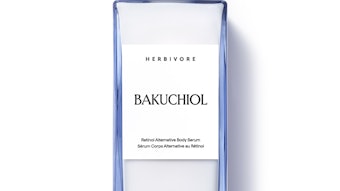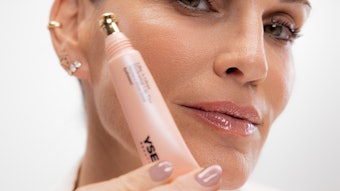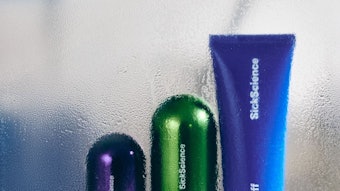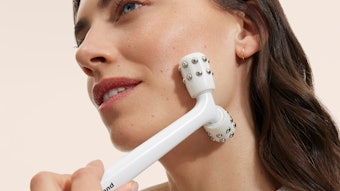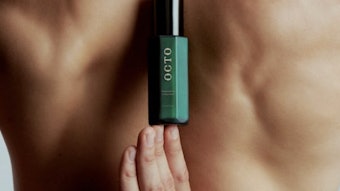- As natural and organic beauty products continue to be a growing trend, more beauty brands are seeking out the process to create and develop certified organic products.
- The major organic certifications in the U.S. are the USDA Organic and the NSF certifications, but there are variations and caveats to both of them.
- Going organic isn’t something to be taken lightly. Organic-seeking consumers can turn on products and brands that appear to be greenwashing, so beauty companies need to be prepared to follow through when they make the organic commitment.
There is no doubt the beauty industry has become aware of the need to incorporate natural and certified organic ingredients into its products. The demand for products that are free of synthetic ingredients and processing has not abated, and economic conditions—including the rough ones seen in recent years—do not appear to affect the natural category to any great degree.
Yet, recent research conducted by the Nutrition Business Journal revealed only about 14% of consumers answered “very important” when asked about the relative significance of natural and organic labeling. It appears most consumers still shop on price and that if a product is either natural or certified organic, that could be considered a tiebreaker for many. (For more insight on consumers’ changing behavior toward organic beauty products, see “Organic Beauty: Hip ... or Just for Hippies?”)
What kinds of considerations does this translate to for beauty brand owners? If natural and organic isn’t “very important” to most people, should marketers bother with this process?
Perhaps this discussion should be framed in a different way, however. Because the natural and organic sector has been growing at near double-digit rates for several decades, is it possible consumers might be saying one thing and doing another? Yes, it does, and this happens all the time. Industry growth rates don’t necessarily jibe with what consumers say they want and do, and all consumer data should be taken with a grain of salt.
With the growing sales data for natural and organic beauty products, this kind of investment is still likely very smart, and it also can help strengthen and identifiably mark your brand to consumers.
Organic Options
Understand, the process of actually earning your beauty product, products or brand a certification is still a process though. There are numerous certifications around the world for natural and certified organic products, and seeking out the certification that best suits your brand’s needs still requires work.
For the U.S. market, it may be best to choose either the U.S. Department of Agriculture (USDA) Organic certification for products that contain 100% certified organic ingredients, or the new NSF/ANSI standard for products that contain at least 70% organic ingredients. The latter standard was created specifically for beauty and personal care products while the USDA certification was originally designed for food products. The USDA certification is intended for “organic” claims while the NSF standard is appropriate for “made with organic ingredients” claims. These two certifications have the most potential for recognition within the U.S. market and are viewed by some as having the most stringent requirements.
Going Organic
In order to develop a certified organic product—a strategic decision that can broaden your channels of distribution, as well as your target market—you must start with certified organic ingredients. The USDA oversees third-party certification for each specific ingredient, as well as for the certifying facilities that process such ingredients. Therefore, a finished goods manufacturer must ensure the ingredient is both organically grown and organically processed.
Historically, the demand for certified organic ingredients has outstripped the supply by as much as 25%. Obviously, this has made it difficult for suppliers to guarantee organic ingredients in large quantities, and it is therefore more difficult to maintain the USDA certification versus the NSF certification, which requires 70% organic ingredients in a product. This is an issue the certified organic supply chain is trying to address with limited success, as successfully encouraging growers to switch to organic has been a daunting task at best, despite the demand and double-digit industry growth rates.
Additionally, much has been made of the fact that the USDA Organic certification is difficult to get, as the regulations were originally intended for food. Some ingredients that aren’t allowed in ingestible products but are commonly found in topical products continually frustrate beauty product developers and manufacturers seeking the USDA Organic certification.
The NSF program seeks to address these issues, although the “made with organic ingredients” claim isn’t as strong as an “organic” claim. However, as a vast majority of consumers don’t know the differences in the parameters for each certification, it’s possible the NSF program might eventually eclipse the USDA program in the next few years, depending on the increasing level of consumer knowledge and the importance consumers will or won’t continue to place on the purity and organic nature of a beauty product.
It also is necessary to clarify that under USDA guidelines, a product that contains 95% or more organic ingredients (excluding water and salt) can use the highly recognizable green-and-white USDA Organic seal on its label. The company can claim “100% organic” and “organic” respectively, depending upon the amount in question. A product made with more than 70% organic ingredients can claim to be “made with organic ingredients” and a product with less than 70% can simply asterisk each particular ingredient as “certified organic,” but that product can make no other claims about its organic nature.
And while this might sound nice and easy, there are still difficulties in translating food regulations to beauty products in order to meet the requirements for the USDA Organic certification. This has made the new NSF seal an attractive option for marketers, but overall, the major continuing problem is a lack of consumer awareness.
The Process
The actual steps to go about becoming certified can be translated fairly simply, as enumerated here.
- Hire a raw materials-sourcing consultant to review your formulas and source certified organic substitutes.
- Based on long-term availability and cost considerations, decide what percentage of your product will be organic.
- Look at replacing all synthetic ingredients in your formula with either organic or natural ingredients. The organic consumer doesn’t want synthetic ingredients in any form, and there are substitutes for all of them at this point.
- Look at all the available certifications, but for the U.S. market, you’ll likely decide between USDA and NSF. The USDA certification is a sought-after choice due to its awareness with regard to food products, but it may not be good for higher-volume beauty brands. The NSF certification is an option that may be a better move for larger companies that move more product volume.
- Ensure your labels and marketing claims are legal by consulting with an U.S. Food and Drug Administration (FDA)/USDA/Federal Trade Commission (FTC) attorney.
- Monitor the supply chain for ingredient availability. As larger companies switch to organic more and more, the supply chain will get squeezed. Make sure all of your certified organic ingredients have substitutes that are neither synthetically derived or synthetically processed (that is, “natural”) so these ingredients can be interchanged if necessary.
- Pay attention to how the certified organic nature of your product may change over time. Numerous companies have had to drop the USDA seal as the certified organic ingredient count dropped below 95%. This problem likely won’t occur with NSF as your formula would have to drop under 70% organic ingredients to necessitate removing the NSF seal.
- Commit to natural and organic. There is no room for synthetic ingredients when your brand is positioned as natural or organic.
Organic Opportunity
The good news is that you have a myriad of case studies on going organic that you can analyze, as many organizations have been through this process before. However, do your research. Make sure this switch fits with your brand’s mission and overall corporate objectives. The biggest mistake you can make in this space is to fail to understand the consumer seeking organic products. The natural and organic products trend is certainly no fad, and half-hearted attempts at pandering to this market end up as product failures. Do it right, and reap the benefits.
Darrin C. Duber-Smith, MS, MBA, is president of Green Marketing, Inc. He has more than 25 years of expertise in marketing and management, including with natural, organic and green/sustainable products. He is a cofounder of the Lifestyles of Health and Sustainability, and he has published more than 70 articles. Duber-Smith also is a marketing professor at the Metropolitan State University of Denver School of Business and an affiliate marketing professor at the Leeds School of Business at the University of Colorado-Boulder. He received the Wall Street Journal’s In-Education Distinguished Professor Award in 2009, the 2012 School of Business Dean’s Award for Teaching Excellence, and is author of Cengage Learning’s “KnowNow! Marketing” blog. [email protected], [email protected]
